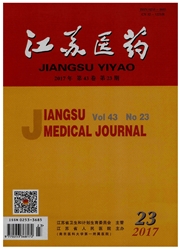

 中文摘要:
中文摘要:
目的研究颈椎病患者术后颈椎弧度的恢复对临床症状改善的影响。方法60例颈椎病患者分为术前生理弧度变直而术后弧度恢复(A组,14例)或未恢复组(B组,17例)、术前颈椎反弓而术后弧度恢复(c组,12例)或未恢复组(D组,17例)。比较各组手术前后颈椎弧度变化及日本骨科协会(JOA)评分改善率。结果各组患者术后颈椎整体弧度、手术节段弧度、颈椎JOA评分均较术前改善(P〈O.05)。A组术后颈椎JOA评分改善率优于B组(P〈0.05或P<0.01),C组JOA评分改善率优于D组(P〈O.05)。结论对于颈椎弧度异常的颈椎病患者,前路手术能改善其颈椎弧度及临床症状;恢复颈椎生理弧度有利于患者症状改善。
 英文摘要:
英文摘要:
Objective To investigate the effect of recovery of cervical physiological curvature on postoperative symptomatic improvement in patients with cervical spondylotic myelopathy. Methods A total of 60 patients with abnormal physiological curvature was divided into four groups of A(straight physiological curvature recovered after surgery, 14 cases), B (straight physiological curvature unrecovered after surgery, 17 cases),C(inverse cervical arch recovered after surgery, 12 cases) and D (inverse cervical arch unrecovered after surgery, 17 cases). The changes of cervical vertebra curvature before and after operation and the improvement rates of JOA score were calculated and compared. Results Compared with preoperation, the whole and segmental curvatures of cervical vertebra and JOA scores after operation in all groups were significantly improved (P〈0. 05). The improvement rates of JOA score after operation in group A were higher than those in group B (P〈0. 05 or P〈0. 01), while which in group C were higher than those in group D(P〈0. 05). Conclusion Anterior approach surgery can improve cervical vertebra curvature and clinical symptoms in the patients with abnormal physiological curvature. Recovered physiological curvature of the vertibrea is beneficial to improving clinical symptoms.
 同期刊论文项目
同期刊论文项目
 同项目期刊论文
同项目期刊论文
 The release of glutamate from cortical neurons regulated by BDNF via the TrkB/Src/PLC-gamma 1 pathwa
The release of glutamate from cortical neurons regulated by BDNF via the TrkB/Src/PLC-gamma 1 pathwa ~G-protein-coupled receptor kinase interactor-1 serine 419 accelerates premature synapse formation i
~G-protein-coupled receptor kinase interactor-1 serine 419 accelerates premature synapse formation i 期刊信息
期刊信息
